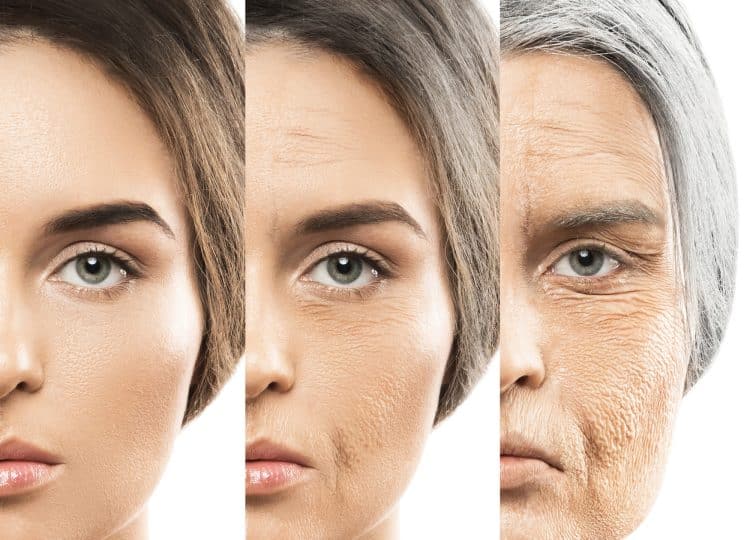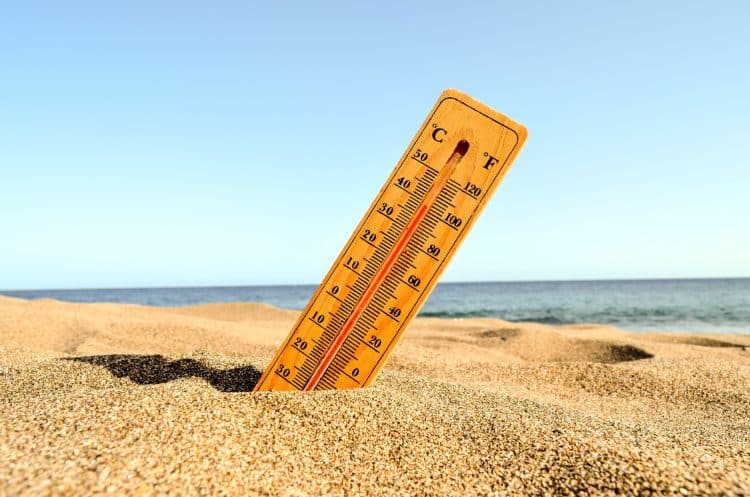Almost everyone has heard about intermittent fasting, if not attempted it themselves. However, the buzz currently is around dry fasting.
Intermittent fasting cycles between eating within a specific period and fasting for the rest of the day. However, you can drink calorie-free beverages like water or black tea during fasting and non-fasting periods. Whereas, when practicing dry fasting, no liquids are permitted even during the fasting period.
Although dry fasting is gaining popularity, it is much more challenging to sustain. So what’s the point of a dry fast? And why are so many people talking about it? Read on to find out the specifics of dry fasting.
What is Dry Fasting?
When practicing dry fasting, you abstain from drinking any fluids throughout your fasting window. Dry fasting has primarily emerged from religious fasting practices. According to a study, more people are turning to time-restricted eating and religious fasting to improve their health [1].
Any intermittent fasting protocols listed below may be used with a dry fast for optimal results. So, consider dry fasting effectively a corollary of intermittent fasting.
Level Up Your Fitness: Join our 💪 strong community in Fitness Volt Newsletter. Get daily inspiration, expert-backed workouts, nutrition tips, the latest in strength sports, and the support you need to reach your goals. Subscribe for free!
Dry Fasting Methods
There are numerous methods to observe a fast. A dry fast may be accomplished in any of the following ways:
1. Intermittent Fasting
The 16/8 intermittent fasting approach, in which participants limit their food intake for 16 hours but are permitted to eat within an eight-hour window, is quite popular among dieters. While you can have calorie-free drinks in regular 16/8 fasting, you won’t consume even water in the fasting period when you combine dry fasting with 16/8 intermittent fasting.
A study proves that daytime dry fasting has no particular side effects and can improve fat metabolism and regulate circadian rhythm. [2]
2. Alternate Day Fasting
As the name implies, an “alternate day” fast is assumed every other day. It’s similar to a fast that lasts a whole day. So, you would eat normally on one day and dry fast the next day.
3. 5:2 Fasting
In this approach, you will abstain from food completely twice every week. So, you would eat normally for five days and dry fast for the remaining two days.
4. Periodic Fasting
This form of fasting involves abstinence from food for specific periods. For example, a three-day dry fast per month.
Benefits of Dry Fasting
Evidence suggests that fasting may have health advantages, including weight loss and slowing the aging process. In this article, we will investigate the purported benefits of dry fasting.
According to proponents of dry fasting, the following advantages can be reaped by engaging in this practice:
1. Weight Reduction
Many believe dry fasting is the most efficient method for shedding excess pounds. It is probably connected to the very low-calorie intake.
Some studies have been done on the relationship between dry fasting and weight loss. In a study, researchers examined the consequences of fasting during Ramadan, which lasts for a whole month, and time-restricted feeding, which indicated many positive health benefits [3]. During Ramadan, those who choose to fast abstain from eating and drinking from dawn to sunset each day.
2. Enhanced Immune System
Going without water for an extended time might help your body’s immune system. As the damaged cells in your body get eliminated during fasting, it helps the body create new cells. This supports the hypothesis that fasting “resets” the immune system.
3. Cell Regeneration
According to animal research findings, extended fasting led to cell regeneration in mice [4]. During phase I of clinical research involving humans, the same researchers noticed comparable good effects in cancer patients undergoing chemotherapy.
4. Delays The Aging Process
Although you can’t turn back time, there are anti-aging treatments. It is because of this reason that the cosmetics business is thriving at an all-time high. According to a study, fasting increases lifespan and helps with overall health improvement. [5]
Your metabolism will speed up during a fast, and your body will produce more antioxidants, naturally slowing down the aging process. According to research, fasting causes a metabolic transition from producing energy based on glucose to making energy based on ketones. [6]
For the anti-aging effect to be successful, you must ensure you meet your daily nutrition goals. You should prioritize relaxation and recuperation, get sufficient sleep, increase blood circulation via exercise, and keep your stress levels under control.
5. Helps Cleanse Your System
Nothing can beat a fast for purifying your system. The body is designed to incinerate poisons and waste products it does not need in their natural state and wash them out. Despite this, a significant number of individuals follow fad cleanse diets.
Fasting rests your digestive system, which helps redirect energy toward activating your body’s natural cleaning mechanism.
It is widely believed that a significant shift in lifestyle, such as fasting, may improve immune function, restore hormonal harmony, and stimulate stem cell regeneration.
6. Skin Benefits
A study published in 2019 found that heightened immune activity brought on by fasting assists in wound healing. [7]
Another study on animals indicated that repeated brief fasting accelerated wound healing. Recent research suggests that fasting may be an effective anti-aging strategy as it delays the development of certain illnesses associated with advancing age. [8]
There are also instances with conflicting outcomes. Researchers observed that caloric restriction slowed down the healing process of wounds in rats in a study done in 2012. [9]
Level Up Your Fitness: Join our 💪 strong community in Fitness Volt Newsletter. Get daily inspiration, expert-backed workouts, nutrition tips, the latest in strength sports, and the support you need to reach your goals. Subscribe for free!
7. Reduce Inflammation
Reduced inflammation has also been studied in dry fasting. Researchers examined the levels of proinflammatory cytokines in fifty healthy individuals in the week leading up to Ramadan in a 2012 study. [10]
They were tested again a month and a third after they had fasted for Ramadan. During the third week of dry fasting, the levels of proinflammatory cytokines in the subjects dropped to their lowest point. This data implies that inflammation decreases while fasting, which may benefit the immune system.
8. Spiritual Benefits
It is stated that dry fasting improves spirituality, which may be connected to fasting for religious purposes. The following are some of the spiritual advantages that supporters have reported:
- a stronger faith
- more gratitude
- increased self-awareness
- People of all religious persuasions have experienced spiritual advantages after going without water for some time
Possible Dangers of Long-Time Dry Fasting
The following are some of the possible side effects of dry fasting:
1. Hunger
When you don’t drink enough water, you’re more likely to feel hungry since water helps keep you satiated throughout a fast.
2. Tiredness
Dehydration can make you may feel tired, weak, and sluggish because your body won’t have the energy to function optimally.
3. Irritability
You are more likely to experience irritability and restlessness when your hunger levels rise.
4. Reduced Urine Production
If you abstain from water, your urine flow will drop, you will likely feel dehydrated, and your urine will probably have a strong odor.
5. Headaches
It is a common side effect of cutting down on caffeine and key nutrients like carbs and water.
6. Inability to Concentrate
When your body does not get enough nutrients, you might feel fatigued and hungry and experience difficulty concentrating on your task.
7. Nausea
Long periods of fasting can cause nausea and long-term health problems.
8. Poor Sleep
Fasting can disturb your sleep schedule, sometimes resulting in poor sleep and morning restlessness.
Who Should Avoid Dry Fasting?
People already suffering from an eating disorder or pre-existing sickness should not dry fast. Nonetheless, people in good health should get the appropriate guidance from health professionals before beginning a dry fast.
Does Dry Fasting Cause Dehydration?
The most serious risk of dry fasting is dehydration. The following are some of the consequences of dehydration:
1. Seizures
When electrolytes in your body, such as sodium and potassium, are out of balance, it may be difficult for your body to effectively transmit electrical impulses from one cell to the next. It may cause involuntary muscle spasms as well as a loss of consciousness.
2. Brain Swelling
When you start drinking fluids again after being dehydrated, your body may try to force an excessive amount of water back into your cells. It may be uncomfortable. During this process, some cells may experience swelling and even rupture. If this happens to your brain cells, the consequences could be severe.
3. Heat Stroke
You risk getting a heat injury if you sweat very little during vigorous activity or if it is scorching outside. It may be very moderate, as in the case of heat cramps, or it can be quite severe, like heat exhaustion or heat stroke.
4. Chances of Kidney Failure
Kidney failure is a potentially life-threatening condition that may develop if your kidneys cannot perform their normal functions of filtering the blood and eliminating waste products and excess fluids from the body.
5. Low Blood Volume Shock
Hypovolemic shock is a potentially fatal condition that happens when a person has a low blood volume in their body, which in turn causes a reduction in blood pressure and a decline in the quantity of oxygen in the body.
6. Coma and Death
A severe case of dehydration may be life-threatening if not addressed quickly.
Learn more about fasting
- Anabolic Fasting: Learn About Building Muscle and Losing Fat Simultaneously
- I’m a Fasting Expert: This is the One Mistake That Destroys Fat Loss During IF
- Inflammation Calculator & Personalized Action Plan
- Dry Fasting Calculator: Estimate Your Weight Loss & Safety Risks
- Intermittent Fasting Weight Loss Calculator: Discover How Much You Can Lose
- Intermittent Fasting vs. Small Meals: Which is Best for Weight Loss?
- 8 Intermittent Fasting Mistakes Beginners Make (And How to Avoid Them)
- I Stuck to an 8-Hour Eating Window for 3 Weeks — Here’s What Happened
Frequently Asked Questions
Why is dry fasting better than water fasting?
Dry fasting is better if you wish to achieve strong anti-inflammatory effects. Inflamed areas subside as they cannot swell without water. Viruses and microbes can only multiply in the presence of water.
Is it true that dry fasting burns fat faster than water fasting?
In reality, a dry fast will help your muscles tone. It is because your body will use the water stored in your cells for energy throughout the fast. Your body is forced to burn toxins and fat, inflammation, and tumors during a dry fast.
Can I exercise during a dry fast?
You can exercise during a dry fast. However, it is important to remember that dry fasts can be demanding on the body.
How many pounds would I lose every day through dry fasting?
If you go a whole day fasting, you can lose between one-third or half a pound of body fat that is not water weight.
Why do I feel better when I dry fast than when I water fast?
Dry fasting works better in terms of strengthening the immune system. If you are dry fasting for religious reasons, you will undoubtedly feel better as you put your faith in God. Dry fasting increases willpower and enhances inner awareness.
Conclusion
How dry fasting works for you will depend on several variables, including your general health, age, degree of physical activity, and the frequency of your fast.
Although there are certain advantages to dry fasting, there are other healthier and more effective methods of water fasting that might assist you in losing weight without any issues.
References
- Comparison of Time-restricted Feeding and Islamic Fasting: A Scoping Review.” World Health Organization – Regional Office for the Eastern Mediterranean, www.emro.who.int/emhj-volume-25-2019/volume-25-issue-4/comparison-of-time-restricted-feeding-and-islamic-fasting-a-scoping-review
- Koppold-Liebscher, Daniela A., et al. “Effects of Daytime Dry Fasting on Hydration, Glucose Metabolism and Circadian Phase: A Prospective Exploratory Cohort Study in Bahá’í Volunteers.” PubMed Central (PMC), 29 July 2021,
- Comparison of Time-restricted Feeding and Islamic Fasting: A Scoping Review.” World Health Organization – Regional Office for the Eastern Mediterranean, www.emro.who.int/emhj-volume-25-2019/volume-25-issue-4/comparison-of-time-restricted-feeding-and-islamic-fasting-a-scoping-review.html. Accessed 6 Dec. 2022.
- Cheng, Chia-Wei, et al. “Prolonged Fasting Reduces IGF-1/PKA to Promote Hematopoietic Stem Cell-based Regeneration and Reverse Immunosuppression.” PubMed Central (PMC), www.ncbi.nlm.nih.gov/pmc/articles/PMC4102383. Accessed 5 Dec. 2022.
- Redman, Leanne M., et al. “Metabolic Slowing and Reduced Oxidative Damage With Sustained Caloric Restriction Support the Rate of Living and Oxidative Damage Theories of Aging.” Cell Metabolism, 3 Apr. 2018.
- https://www.nejm.org/doi/full/10.1056/NEJMra1905136. www.nejm.org/doi/full/10.1056/NEJMra1905136. Accessed 11 Dec. 2022.
- Bragazzi, Nicola Luigi, et al. “Fasting and Its Impact on Skin Anatomy, Physiology, and Physiopathology: A Comprehensive Review of the Literature.” PubMed Central (PMC), 23 Jan. 2019.
- Influence of Short-term, Repeated Fasting on the Skin Wound Healing of Female Mice – PubMed.” PubMed, 1 Feb. 2011, pubmed.ncbi.nlm.nih.gov/25881054.
- Effect of Calorie Restriction and Refeeding on Skin Wound Healing in the Rat – PubMed.” PubMed, 1 Dec. 2012, pubmed.ncbi.nlm.nih.gov/22037865.
- Intermittent Fasting During Ramadan Attenuates Proinflammatory Cytokines and Immune Cells in Healthy Subjects – PubMed.” PubMed, 1 Dec. 2012, pubmed.ncbi.nlm.nih.gov/23244540.















